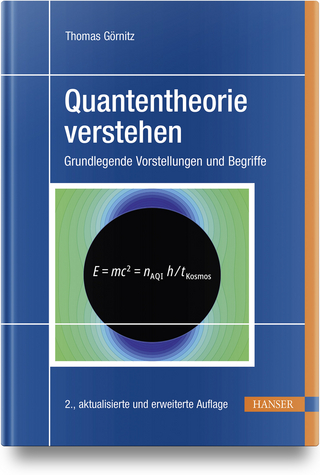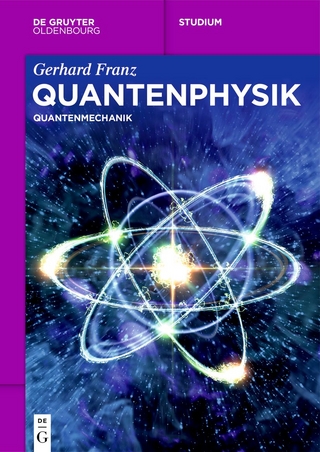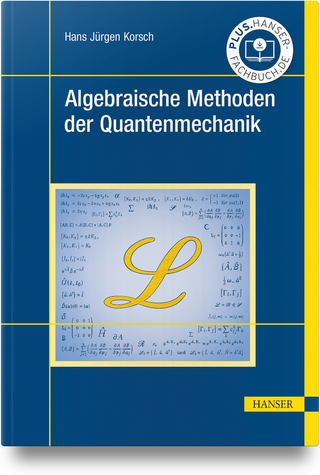
Quantum Mechanics
Cambridge University Press (Verlag)
978-1-108-83873-3 (ISBN)
Written for a two-semester graduate course in Quantum Mechanics, this comprehensive text helps develop the tools and formalism of Quantum Mechanics and its applications to physical systems. It suits students who have taken some introductory Quantum Mechanics and Modern Physics courses at undergraduate level, but it is self-contained and does not assume any specific background knowledge beyond appropriate fluency in mathematics. The text takes a modern logical approach rather than a historical one and it covers standard material, such as the hydrogen atom and the harmonic oscillator, the WKB approximations and Bohr-Sommerfeld quantization. Important modern topics and examples are also described, including Berry phase, quantum information, complexity and chaos, decoherence and thermalization, nonstandard statistics, as well as more advanced material such as path integrals, scattering theory, multiparticles and Fock space. Readers will gain a broad overview of Quantum Mechanics, as solid preparation for further study or research.
Horațiu Năstase is Researcher at the Institute for Theoretical Physics, State University of São Paulo. He completed his PhD at Stony Brook with Peter van Nieuwenhuizen, co-discoverer of Supergravity. While in Princeton as a postdoc, in a 2002 paper with David Berenstein and Juan Maldacena, he started the pp-wave correspondence, a sub-area of the AdS/CFT correspondence. He has written more than 100 scientific articles and 5 other books, including Introduction to the AdS/CFT Correspondence (2015), String Theory Methods for Condensed Matter Physics (2017), Classical Field Theory (2019), Introduction to Quantum Field Theory (2019), and Cosmology and String Theory (2019).
1. The mathematics of Quantum Mechanics 1: Finite dimensional Hilbert spaces; 2. The mathematics of Quantum Mechanics 2: Infinite dimensional Hilbert spaces; 3. The postulates of Quantum Mechanics and the Schrödinger equation; 4. Two-level systems and spin 1/2, entanglement and computation; 5. Position and momentum and their bases, canonical quantization, and free particles; 6. The Heisenberg uncertainty principle and relations, and Gaussian wave packets; 7. One dimensional problems in a potential V (x); 8. The harmonic oscillator 9. The Heisenberg picture and general pictures; evolution operator; 10. The Feynman path integral and propagators; 11. The classical limit and Hamilton-Jacobi (the WKB method), Ehrenfest theorem; 12. Symmetries in quantum mechanics I: Continuous symmetries; 13. Symmetries in quantum mechanics II: Discrete symmetries and internal symmetries; 14. Theory of angular momentum I: operators, algebras, representations; 15. Theory of angular momentum II: addition of angular momenta and representations; oscillator model; 16. Applications of angular momentum theory: tensor operators, wave functions and the Schrödinger equation, free particles; 17. Spin and L + S; 18. The Hydrogen atom; 19. General central potential and 3 dimensional (isotropic) harmonic oscillator; 20. Systems of identical particles; 21. Application of identical particles: He atom (2-electron system) and H2 molecule; 22. Quantum mechanics interacting with classical electromagnetism; 23. Aharonov-Bohm effect and Berry phase in quantum mechanics; 24. Motion in a magnetic field, Hall effect and Landau levels; 25. The WKB and semiclassical approximation; 26. Bohr-Sommerfeld quantization; 27. Dirac quantization condition and magnetic monopole;s 28. Path integrals II: imaginary time and fermionic path integral; 29. General theory of quantization of classical mechanics and (Dirac) quantization of constrained systems; 30. Quantum entanglement and the EPR paradox; 31. The interpretation of quantum mechanics and Bell's inequalities; 32. Quantum statistical mechanics and tracing over a subspace; 33. Elements of quantum information and quantum computing; 34. Quantum complexity and quantum chaos; 35. Quantum decoherence and quantum thermalization; 36. Time-independent (stationary) perturbation theory: nondegenerate, degenerate, and formal cases; 37. Time dependent perturbation theory: first order; 38. Time-dependent perturbation theory: second and all orders; 39. Application: interaction with (classical) electromagnetic field, absorption, photoelectric and Zeeman effect; 40. WKB methods and extensions: state transitions and Euclidean path integrals (instantons); 41. Variational methods; 42. Atoms and molecules, orbitals and chemical bonds: Quantum chemistry; 43. Nuclear liquid droplet and shell models; 44. Interaction of atoms with electromagnetic radiation: transitions and lasers; 45. One-dimensional scattering, transfer and S matrices; 46. Three dimensional Lippmann-Schwinger equation, scattering amplitudes and cross-sections; 47. Born approximation and series, S- and T-matrix; 48. Partial wave expansion, phase shift method and scattering length; 49. Unitarity, optics and the optical theorem; 50. Low energy and bound states, analytical properties of scattering amplitudes; 51. Resonances and scattering, complex k and l; 52. The semiclassical: WKB and eikonal approximations for scattering; 53. Inelastic scattering; 54. The Dirac equation; 55. Multi-particle states in atoms and condensed matter: Schrödinger vs. occupation number; 56. Fock space calculation with field operators; 57. The Hartree-Fock approximation and other occupation number approximations; 58. Nonstandard statistics: anyons and nonabelions.
| Erscheinungsdatum | 25.07.2022 |
|---|---|
| Zusatzinfo | Worked examples or Exercises |
| Verlagsort | Cambridge |
| Sprache | englisch |
| Maße | 210 x 261 mm |
| Gewicht | 1650 g |
| Themenwelt | Naturwissenschaften ► Physik / Astronomie ► Quantenphysik |
| ISBN-10 | 1-108-83873-1 / 1108838731 |
| ISBN-13 | 978-1-108-83873-3 / 9781108838733 |
| Zustand | Neuware |
| Haben Sie eine Frage zum Produkt? |
aus dem Bereich


